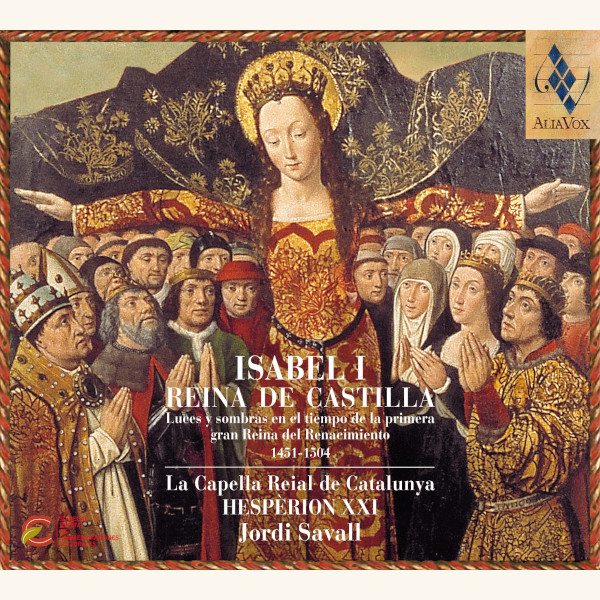ISABEL I REINA DE CASTILLA
1451-1504 · Luces y sombras
Hespèrion XXI, Jordi Savall, La Capella Reial de Catalunya
17,99€
Reference: AV9838
- La Capella Reial de Catalunya
- Hespèrion XXI
- Jordi Savall
At the time of Isabella’s birth in 1451, the Iberian Peninsula was divided into three separate kingdoms: Aragon, Castile and Portugal. Daughter of John II of Castile, in 1469 Isabella married Prince Ferdinand, the heir to the Crown of Aragon. When her brother died in 1474, Isabella became queen of Castile. In 1497, her husband acceded to the crown of Aragon as Ferdinand II, and from that moment on, the two monarchs became the architects of the unification of Spain, introducing profound reforms of the institution of the monarchy and laying the foundations of what was to become the great and mighty Spanish empire of the 16th century. However, the “Catholic Monarchs”, as they were called, were also the architects of the Inquisition and were responsible for the expulsion of the unconverted Jews and Moslems. Another major event of the reign of Isabella the Catholic, one which was to determine the course of history for centuries to come, was Christopher Columbus’s discovery of the Americas in 1492. Isabella died in 1504, in Medina del Campo; she was succeeded by her daughter Joanna until 1516, the year of Charles V’s accession to the throne.
+ informazioni nel libretto del CD







Compartir